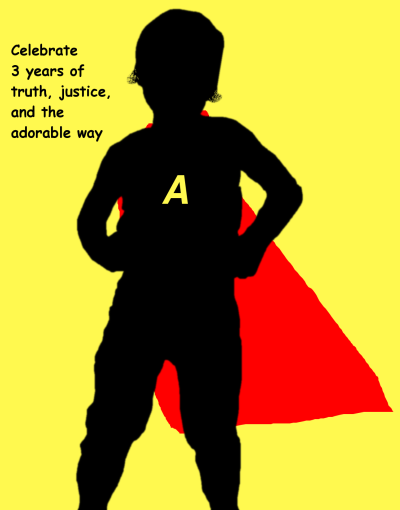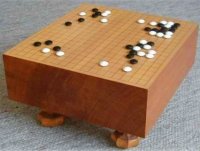One of her lesser superpowers was demonstrated a couple of years ago when I bought the DVD set of HBO’s Harold and the Purple Crayon series for my kids. The day it arrived from Amazon I unwrapped it and played the first episode. The kids were delighted. When the end credits rolled, I was mildly surprised to see Sharon Stone’s name as the narrator.
 A little later, while we were watching another episode, Andrea came home. I asked her, “Can you guess whose voice that is doing the narration?”
A little later, while we were watching another episode, Andrea came home. I asked her, “Can you guess whose voice that is doing the narration?”
Andrea listened for a few moments and thought, then said, “Sharon Stone?”
You could have knocked me over with a feather.
Now, Sharon Stone is a beautiful woman and a fine actress. But I think even her most ardent fans would agree that her voice, while pleasant, even attractive, is not particularly distinctive. It’s generically feminine, with no unique accent or timbre or phrasing. To my ears, the voice reading that narration in a soothing, maternal fashion could be anyone’s. Furthermore, Andrea — unlike me — is conspicuously inattentive to the world of Hollywood and celebrities. Movies, to her, are to be watched, hopefully enjoyed, and then largely forgotten. Movie stars mean almost nothing to her, and with the hoopla surrounding Basic Instinct and Casino more than a decade in the past, Sharon Stone in particular was not readily brought to mind. (Sorry, Sharon.)
If I hadn’t known it was Sharon Stone, and someone had asked me to guess whose voice it was (indicating, by the very asking, that the answer must be a surprising celebrity), I would have said Meryl Streep or Madonna or somebody. But in under ten seconds Andrea came back with, “Sharon Stone.”
I have satisfied myself that Andrea had no secret foreknowledge of the answer, and that no ordinary human (who’s not a friend or a devoted fan of Sharon Stone) could have gotten the right answer so quickly, and on the first try. The only remaining explanation: it’s a superpower.
Now all that remains is figuring out what possible application this power can have in the fight against supervillainy.


 The appeal of Go lies in the dichotomy between the extreme simplicity of its rules and the unbelievably rich complexity of the gameplay to which they give rise. Its stark aesthetics are striking too: the ideal Go board is a thick block of beautiful blonde wood, its playing surface a grid of thin black lines (laid down with
The appeal of Go lies in the dichotomy between the extreme simplicity of its rules and the unbelievably rich complexity of the gameplay to which they give rise. Its stark aesthetics are striking too: the ideal Go board is a thick block of beautiful blonde wood, its playing surface a grid of thin black lines (laid down with  A love poem for my wife, in
A love poem for my wife, in 
